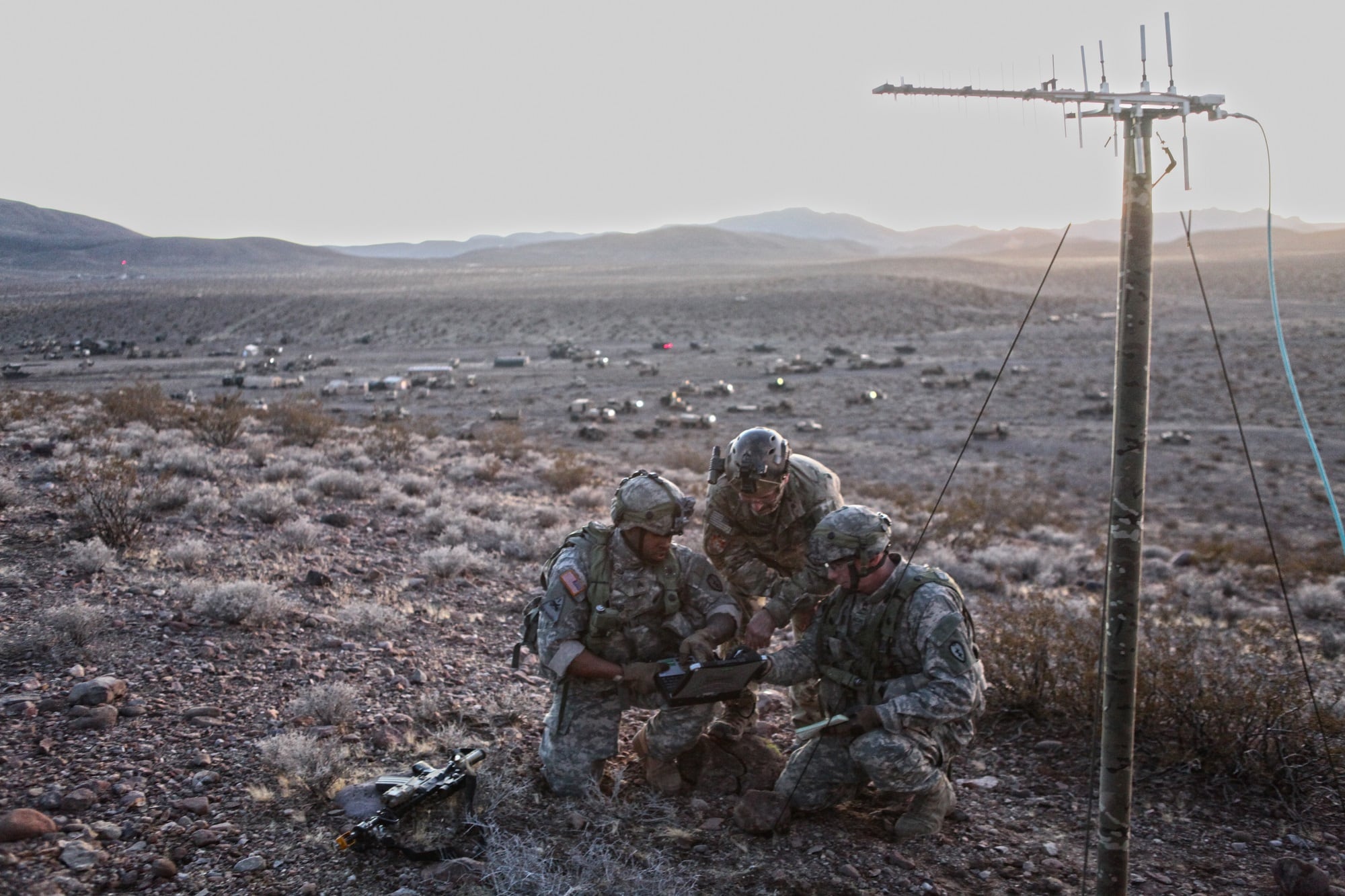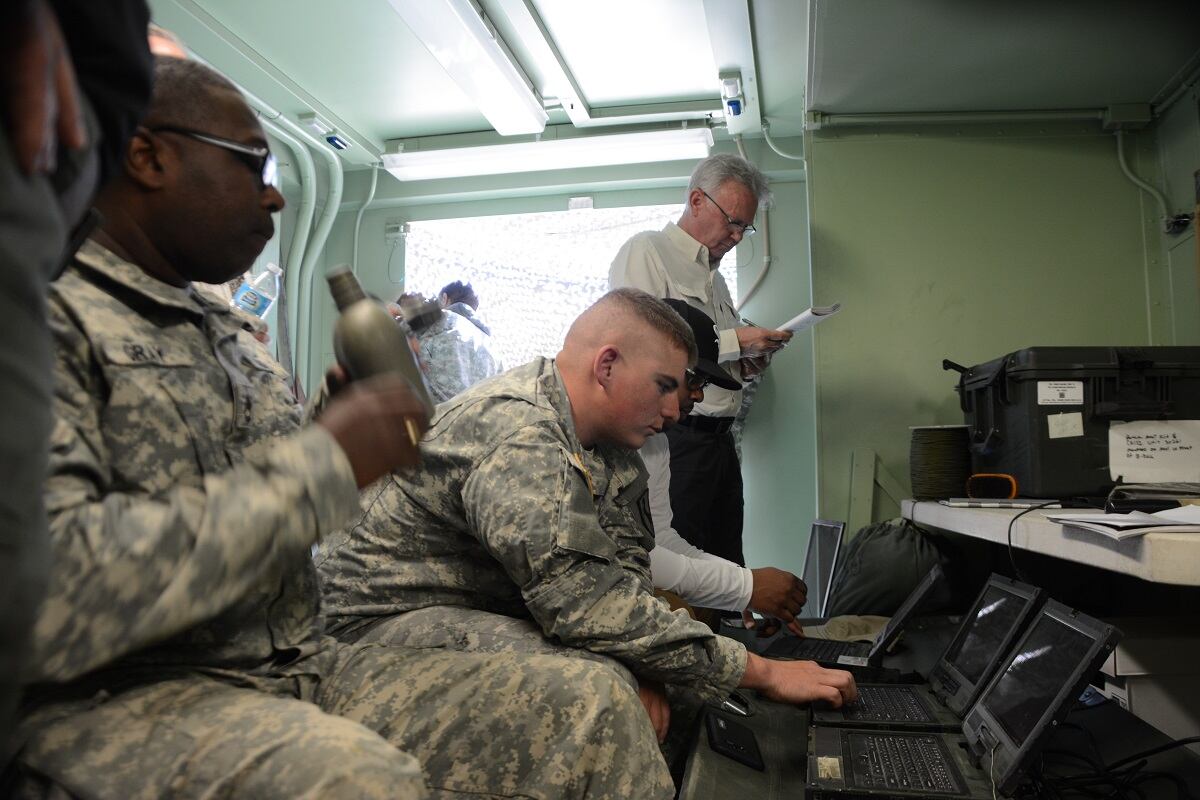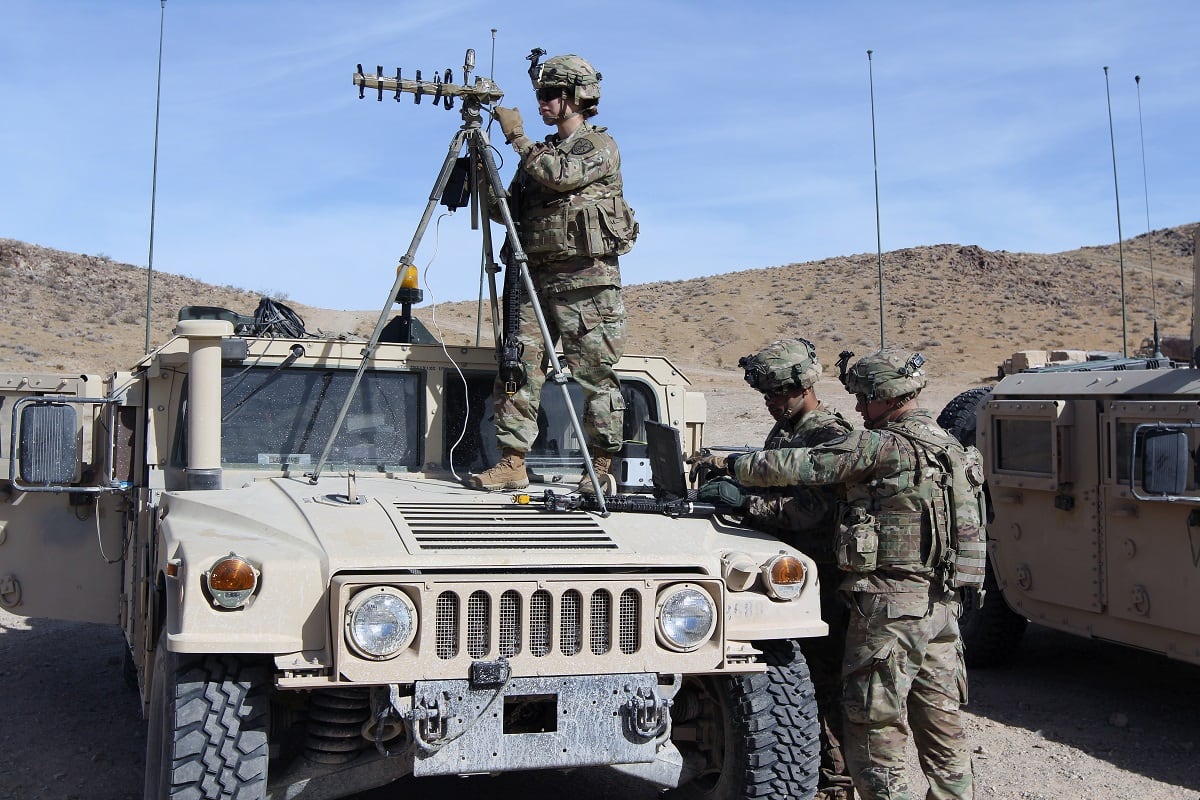Details are crystallizing on new Army cyber units that will provide information-related capabilities from the theater level all the way to the tactical edge.
The Army is beginning to formalize and even move on forming these units — some of which were already being piloted in one form or fashion — putting real force structure toward fighting a 21st-century conflict.
RELATED

These teams are organic to the Army and separate from the cyber teams that belong to U.S. Cyber Command, which typically perform strategic, national level IP-based network operations as opposed to more localized effects.
Theater level
At the theater level, the Army is establishing a specialized detachment within its multidomain task force — located at Fort Lewis in Washington, where the Army is working out through experimentation and exercises to figure how to fight in future operations.
The detachment — called the Intelligence, Information, Cyber, Electronic Warfare and Space unit (I2CEWS) — will integrate all the capabilities within its namesake under a single formation.
Maj. Gen. John Morrison, commander of the Cyber Center of Excellence, told Fifth Domain that the I2CEWS will focus on a geographic region and might differ in terms of make-up from region to region.
There will be one in Indo-Pacific Command, the region where the multidomain task force currently focuses, and one oriented to Europe.
The first I2CEWS was activated at Fort Lewis in January 2019.
Since these units will be theater focused, they’ll be set up to operate from the competition phase all the way through operations, Morrison said.
RELATED

According to an Army chart, made available to Fifth Domain, the theater level includes the integration and synchronizing of capabilities in the I2CEWS’s respective region, to include electronic warfare and offensive cyber. Of note, some of the EW capabilities, aerial EW in particular, are still being developed and thus are only proposed at this time as a potential capability.
Senior Army leadership has discussed altering the way it is organized to fight future multidomain conflicts, and a theater focused, information-centric force gets to that end.
“The Army has relied on counterinsurgency operations over the past 15 years that depended greatly on the Brigade Combat Team. But now, with a new focus on large-scale ground combat operations anticipated in the future operating environment, that will require echelons above brigade, all of which will solve unique and distinct problems that a given BCT can’t solve by itself,” Lt. Gen. Eric Wesley, Futures and Concepts Center director, said.
Ground unit level
Drilling down into more of the tactical and operational space, the Army is now beginning to put resources behind establishing the 915th Cyber Warfare Support Battalion.
Details to date have been scarce regarding this unit, with officials acknowledging the Army approved its growth in 2019 and that it would serve Army-specific missions, not U.S. Cyber Command joint missions. It will be used to integrate intelligence, cyber, electronic warfare, signals, information operations and fires into one formation, while also able to deliver effects remotely and through local expeditionary cyber teams that will plug into the cyber and electromagnetic activities (CEMA) sections located in each brigade planning cell.
“The Cyber Warfare Support Battalion is a service-retained tactically focused force … that will deploy expeditionary cyber teams to provide offensive and defensive cyber capabilities at a specific echelon — we think it’s primarily going to be division or corps — that allows it to be tied all the way back into the broader cyber enterprise that we have inside the Army,” Morrison said.
While at division and corps, these capabilities can be pushed down to lower tactical echelons.
The exact timetable for when the unit will stand up is still in flux, though the Army is currently working through details as an order has went out making the unit effective January 1.
According to an Army chart, capabilities to be delivered from division include direct support and general support signals intelligence and EW support, long-range sensing, conduct of non-kinetic fires and enable cyber operations. At the brigade level, these capabilities include full-spectrum electronic attack, electronic support and electronic protect, site and media exploitation and enabled cyber operations.
The Cyber Warfare Support Battalion will essentially be a one-stop-shop for information-related capabilities similar to how the I2CEWS will integrate and synchronize those effects.
“What the 915th is going to do is tactical, information warfare operations — [which] is probably a better banner term,” Col. Brian Vile, commander of the 780th Military Intelligence Brigade, told Fifth Domain. “In reality it’s not just cyber; it’s cyber, EW, [information operations], [signals intelligence] ... it’s everything.”
Vile said that, while the United States has the best infantry in the world, the information domain is where a large part of the frontlines will reside in the battlefields of the future.
“The information domain, the cognitive domain really is where we need to be fighting and winning; it’s where we’re losing,” he said.
The Cyber Warfare Support Battalion is a direct outgrowth of the CEMA Support to Corps and Below pilot program run by Army Cyber Command at the National Training Center. Through several rotations, the pilot sought to experiment what tactical cyber and electronic warfare formations would look like and how they could work within of a brigade combat team.
“The CWSB is the formal instantiation of a lot of things we were playing with and a lot of the lessons learned from our [Expeditionary Cyber Support Detachment] activities,” Vile said, referencing a nonoperational unit made up of personnel from 780th that was constructed merely for the pilot.
It is important to note that these new formations, despite common misconceptions that cyberwarriors don’t necessarily have to be physically fit to sit in sanctuary and conduct operations on a keyboard, will need to maneuver side-by-side with infantry or vehicular units.
“They’re wearing body armor, just like everybody else. They’re carrying some kit that’s probably going to outweigh your standard rifleman and, oh, by the way, they’re still trying to solve the same technical challenges that [military intelligence] folk are doing on a day-to-day basis,” Vile said. “Our soldiers are going to have to keep up with the infantry guys. If you start to fall behind, then you’re degrading the commander’s ability to conduct operations … They have to be able to keep up with infantry formations, period, full stop.”
Mark Pomerleau is a reporter for C4ISRNET, covering information warfare and cyberspace.








